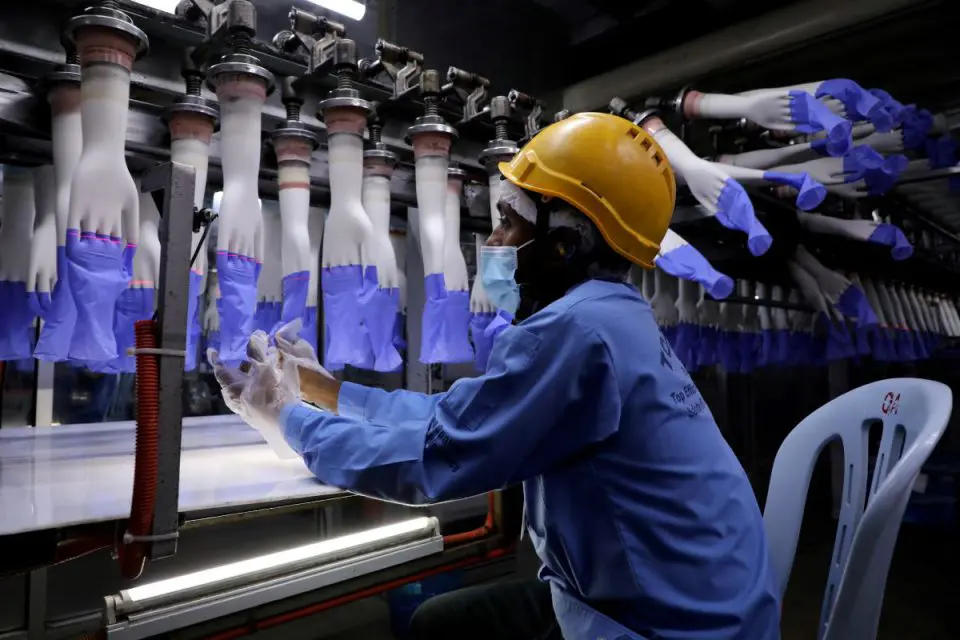By Yasmin Ramlan
SHAH ALAM, Dec 29 — Selangor has made positive strides towards realising its vision as the gateway to Asean by achieving another milestone in its economic growth.
Earlier this year, the latest official data revealed the state made its highest-ever contribution to Malaysia’s national gross domestic product (GDP) in 2022, at 25.5 per cent.
For the last five decades, Selangor has steadfastly maintained its position as Malaysia’s pivotal manufacturing hub, encompassing industries like automotive, electrical and electronics, logistic services, aerospace, and pharmaceuticals.
The driving forces behind its economic growth are the two main sectors of manufacturing and services, which Selangor aims to further expand in the coming years.
According to Investment, Trade and Industry Minister Datuk Seri Tengku Zafrul Tengku Abdul Aziz, the state’s total trade rose by 14.2 per cent year-on-year (y-o-y) to RM806.3 billion in the first half of this year (1H2023) from RM706.02 billion in 1H2022. avi
At the same time, the state’s exports rose 9.1 per cent y-o-y to RM360.04 per cent from RM330.1 billion in 1H2022, signifying that Selangor has continued to maintain its positive momentum from 2021 to June 2023.
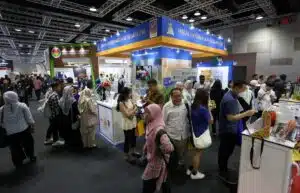
Double Success
The state’s two primary international events this year, the Selangor International Business Summit (SIBS) and the Selangor Aviation Show (SAS), sealed its reputation as a venue in the Asean region capable of attracting investors and key economic stakeholders.
SIBS’ seventh edition, which took place from October 19 to October 22 this year, surpassed expectations when it brought in RM6.12 billion in potential transaction value, quadrupling its initial target.
Thirty-four memorandums of understanding (MoUs) were signed across various industry subsectors.
Due to the overwhelming response, the state government decided to organise the event biannually starting next year, where it is scheduled to run from July 25 to July 27 and from October 17 to October 19.
Meanwhile, at SAS 2023, the 28 MoUs signed doubled that of the previous year.
The inked agreements encompass collaborations across various subsectors of the aerospace industry, with roughly RM823 million in potential transaction value.
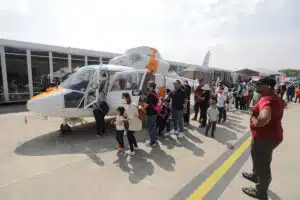
Mega Projects
Selangor’s strategic economic position has always made it a popular choice for Malaysians seeking better employment opportunities.
However, its rapidly increasing population means it faces additional challenges to provide adequate jobs.
Despite this, in the first quarter (Q1) of 2023, the state was able to lower its unemployment rate to 2.6 per cent compared to 2.9 per cent in the previous year.
The drop is a positive development in line with Malaysia’s unemployment target rate of three per cent for next year, compared to the 3.4 per cent recorded this year.
To maintain its economic momentum, as well as prioritise Selangor residents’ well-being, Menteri Besar Dato’ Seri Amirudin Shari announced a RM2.53 billion budget allocation for 2024.
Themed ‘Independent Selangor: Driving Progress, Fostering Unity’, among its key priorities, is the goal of being debt-free by 2024.
Other strategic initiatives of the state include the ongoing implementation of the First Selangor Plan (RS-1) 2021–2025, which, according to Malaysia Industrial Development Finance Bhd (MIDF), is expected to promote the state’s GDP growth to above 4.5 per cent next year.
The state government has identified nine high-impact projects focusing on industries which will boost Selangor’s economic development.
They include emphasising ports and logistics, the digital economy, aerospace, electrical and electronics, mechanical and engineering, the halal sector, automotive, life sciences, tourism, and agrotechnology.
Among them are the Integrated Development Region in South Selangor (Idriss), the Sabak Bernam Development Area (Sabda), and the Selangor Maritime Gateway (SMG) initiative.
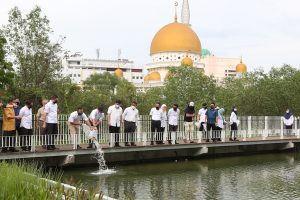
Room for Growth
Commenting on the RS-1, KSI Strategic Institute advisor Prof Anthony Dass emphasised how the state’s high-impact projects will play a critical role for Malaysia.
“With various pro-growth initiatives, the state can expand beyond 4.5 per cent in 2024. The 2024 Selangor Budget and RS-1 targets are crucial for Malaysia due to the golden state’s economic size,” the Unitar International University lecturer told Selangor Journal recently.
According to economist Prof Barjoyai Bardai, Selangor is a well-performing state based on its overall economic performance in 2022 and 2023, and the industrial sector has played a pivotal role in contributing to its performance.
“Its substantial contribution to exports is noteworthy, and Selangor has maintained its status as an industrial hub for over 50 years.
“However, there has not been a significant quantum leap in Selangor’s development,” he said.
According to the Department of Statistics Malaysia, Penang, Johor, and Selangor made up 70.5 per cent of Malaysia’s total exports in April this year, with Penang remaining as the top exporter at 31.5 per cent.
This is followed by Johor at 21.7 per cent, Selangor (17.3. per cent), Sarawak (7 per cent), and Kedah (4.6 per cent).
Dass emphasised that Selangor’s economic resilience lies in the strength of its diversified manufacturing, construction, and services sectors, as well as huge consumer demand.
He also pointed out the importance of the state’s focus on environmental, social, and governance (ESG) practices.
“Positive impact is expected following their focus on basic infrastructure, including roads, bridges, and water-related projects. This includes the emphasis on environmental, social, and governance practices, while the emphasis on reducing carbon footprint will support the economy,” Dass said.
Nevertheless, both Barjoyai and Dass opined there is room for improvement and suggested Selangor focus on pressing issues aligned with current needs.
“As an industrial hub, Selangor must accelerate and compel industries to transition to the Fourth Industrial Revolution (IR4.0), as failure to do so could lead to a stagnant workforce scenario, hindering salary progression, especially among unskilled employees,” said Barjoyai.
Malaysia, in general, has lagged in making swift advancements, particularly in transitioning to IR4.0 and IR5.0, compared to countries like Japan, Taiwan, and Germany, which are currently implementing IR5.0.
“To overcome this, the industrial sector needs to take the lead by embracing IR4.0 and IR5.0,” he said, recommending that Selangor could serve as a pioneer in this and set an example for other states in Malaysia.
Meanwhile, Dass touched on the need for Selangor to strengthen its strategies, especially on technology, regional cooperation, and attracting high-quality investments in preparation for future challenges.
“It needs to set its sights on the future of technology and regional cooperation and attract high-quality investments which align with the state’s identified industries.
“These include public transportation, climate change solutions, and high-quality manufacturing using automation, and new fields in biotechnology and pharmaceuticals to prepare for the next pandemic,” said the former Ambank chief economist.
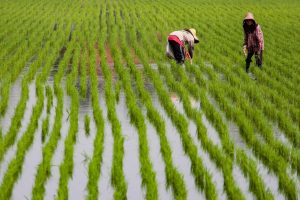
Food and Tech
Barjoyai suggested the state government focus on micro, small, and medium entrepreneurs, groups targeted by the 12th Malaysia Plan, as they are expected to contribute 45 per cent to the national GDP.
“Considering the need for preparedness in IR4.0 and IR5.0, perhaps Selangor could explore establishing an excellence centre dedicated to providing entrepreneurs with the necessary training and exposure to advanced technologies.
“The state government can also encourage collaborations with funding institutions or financial companies, which could further facilitate investments in such initiatives and allow entrepreneurs to stay abreast of cutting-edge technologies,” he said.
On his part, Dass suggested an increase in food production, especially the supply of rice, fish, and meat, amid the global food supply crisis in anticipation of a potentially prolonged crisis period.
During the budget presentation, Amirudin announced the state government’s commitment to allocate RM50 million to safeguard food security for Selangor’s expanding 7.2 million population.
Of this sum, RM40 million is reserved for a strategic collaboration with the Selangor Agricultural Development Corporation.




